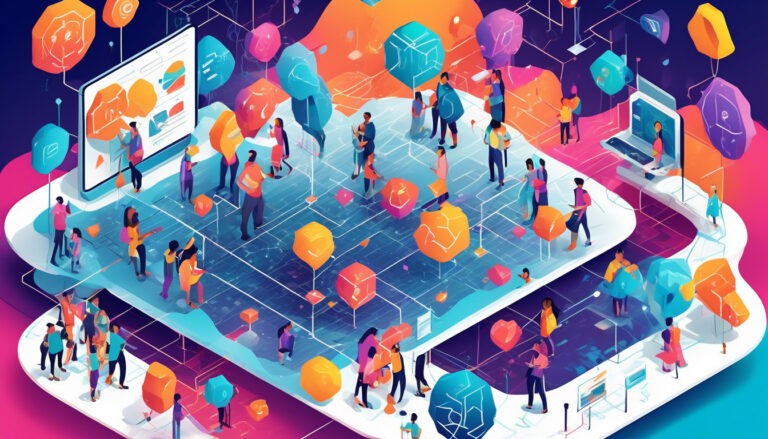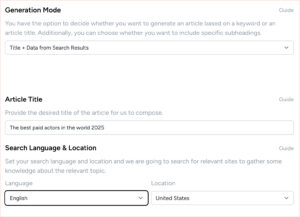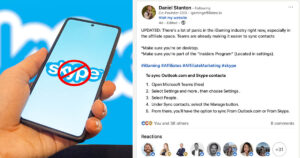As we navigate the ever-evolving landscape of digital content, we find ourselves increasingly drawn to experiences tailored specifically for us.
This shift towards personalization has transformed how we consume and distribute information. We’ve all noticed how:
- Our social media feeds seem to know our interests better than we do.
- Streaming services suggest movies and shows that align perfectly with our tastes.
But what impact does this have on the broader ecosystem of content distribution?
Together, we’ll explore:
- How personalized content is reshaping the ways we engage with information and entertainment.
- The algorithms that power these recommendations.
- The benefits and challenges of a tailored content experience.
- The implications for creators and distributors alike.
By understanding the nuances of personalization, we can better appreciate its significance in our digital lives and foresee the future of content consumption and distribution.
Importance of Personalization
Personalization plays a crucial role in ensuring that content resonates with its intended audience.
When we personalize our content, we’re not just tailoring messages; we’re fostering a genuine connection with our readers. This connection boosts engagement, making our audience feel seen and understood.
It’s through these personalized experiences that we can build a sense of community and belonging.
To achieve effective personalization, we rely heavily on data insights. These insights help us understand our audience’s preferences and behaviors, allowing us to create content that speaks directly to them. By leveraging data, we can determine:
- What type of content our audience enjoys
- When they’re most likely to engage with it
Incorporating personalization into our content strategy isn’t just a trend; it’s a necessity for meaningful engagement.
When we show our audience that we understand and value them, we create a loyal community that’s more likely to interact with and share our content.
Understanding Target Audience
To effectively personalize content, we must first have a deep understanding of our target audience. By knowing who they are, what they value, and how they interact with content, we can create meaningful connections that foster a sense of belonging. Personalization isn’t just a buzzword; it’s a pathway to genuine engagement.
Gathering Data Insights
- We start by gathering data insights that reveal patterns in behavior, preferences, and demographics.
- These insights help us paint a detailed picture of our audience, allowing us to tailor our messages to resonate on a personal level.
- When our audience feels understood and valued, their engagement naturally increases.
Analyzing Data Insights
- Analyzing these data insights enables us to identify key segments within our audience.
- We can then develop personalized strategies that speak directly to the unique needs and desires of these segments.
Outcome of Personalization
- The result is content that feels relevant and compelling, driving deeper engagement and building a loyal community.
- In this way, personalization transforms casual viewers into active participants in our shared journey.
Tailoring Content for Segments
To effectively tailor content for segments, we need to leverage the detailed audience insights we’ve gathered. By understanding our audience’s preferences and behaviors through data insights, we can create personalized content that resonates deeply with each segment.
Personalization goes beyond just addressing someone by their name; it’s about delivering the right content at the right time.
Steps to Personalization:
- Identify the unique characteristics of each segment.
- Craft messages that speak directly to their needs and interests.
When we align content with our audience’s values, we foster a sense of belonging and connection. This isn’t just about meeting expectations; it’s about exceeding them and driving genuine engagement.
Using Data Insights:
- Reveal patterns and trends.
- Predict what each segment will find compelling.
- Continuously refine our approach based on this data.
By doing so, we ensure that our content remains relevant and impactful. In doing so, we not only boost engagement but also build a loyal community around our brand.
Improving User Engagement
To enhance user engagement, we must focus on creating interactive and dynamic content that captivates our audience’s attention.
By leveraging personalization, we can tailor content to individual preferences, making each user feel valued and understood. This sense of belonging fosters deeper connections and encourages active participation.
Utilizing data insights, we can understand our audience’s behavior and preferences better. These insights allow us to craft content that resonates on a personal level, increasing engagement rates.
For instance,
- recommending articles based on past reading habits
- suggesting products aligned with user interests
can significantly boost interaction.
Moreover, incorporating interactive elements like quizzes, polls, and personalized recommendations makes our content more engaging.
When users feel that our content speaks directly to them, they’re more likely to connect and engage.
Let’s not forget the importance of timely and relevant updates, which keep our audience coming back for more.
In essence, personalization powered by data insights is key to improving user engagement and fostering a loyal community.
Enhancing Customer Experience
To enhance customer experience, we must prioritize understanding and addressing our users’ unique needs and pain points.
By leveraging personalization, we can create tailored content that resonates with each individual, making them feel valued and understood. This approach not only boosts engagement but also fosters a sense of belonging within our community.
Using data insights, we can uncover patterns in user behavior and preferences, allowing us to refine our content strategy continuously. We collect and analyze this data to identify what works and what doesn’t, enabling us to deliver more relevant and compelling content. By doing so, we ensure our audience receives the right messages at the right time.
Our commitment to personalization means we can anticipate our users’ desires and provide solutions before they even realize they need them. This proactive approach transforms their experience, making interactions with our content seamless and enjoyable.
Ultimately, by focusing on these personalized experiences, we create a more engaged and loyal audience.
Boosting Brand Loyalty
To boost brand loyalty, we need to build authentic and meaningful connections with our audience.
Personalization is key to achieving this. By tailoring our content to the unique preferences and behaviors of our customers, we make them feel seen and valued. This sense of belonging fosters loyalty and deepens engagement.
Using data insights, we can better understand our audience’s needs and interests. This allows us to deliver content that resonates with them on a personal level. When customers see that we’re paying attention to their preferences, they’re more likely to develop a strong bond with our brand.
Engagement is another crucial factor. By encouraging interactions and actively responding to our audience, we create a sense of community. This two-way communication not only boosts loyalty but also provides us with valuable feedback to further refine our personalization strategies.
In essence, personalization, driven by data insights and focused on engagement, is the foundation for building lasting brand loyalty.
Increasing Conversion Rates
To increase conversion rates, we must strategically align our content with the specific stages of the customer journey.
Personalization plays a crucial role in this alignment. By leveraging data insights, we can tailor our messages to meet the unique needs and preferences of our audience at each touchpoint. This deepens engagement, making our audience feel understood and valued.
When we use data insights to understand our audience’s behavior, we create content that’s more relevant and timely. For instance, by analyzing past interactions, we can predict what type of content will resonate most during the consideration phase versus the decision phase. This targeted approach not only captures attention but also guides potential customers toward making a purchase.
Engagement is key. When our audience feels a personal connection to our content, they’re more likely to take action. By fostering this sense of belonging through personalized experiences, we significantly boost our conversion rates.
Let’s continue to harness the power of personalization and data insights to drive meaningful engagement and conversions.
Maximizing Content Relevance
To maximize content relevance, we need to continuously analyze and adapt our strategies based on audience feedback and evolving preferences.
Personalization is at the heart of this process.
By tailoring our content to match the unique tastes and interests of our audience, we enhance their sense of belonging and connection with our brand. Engagement skyrockets when users see content that resonates with them on a personal level.
We can’t rely on a one-size-fits-all approach. Instead, we must use data insights to understand our audience better. This means regularly reviewing how our content performs and making adjustments to ensure it stays relevant.
When we align our content with what our audience truly values, we build trust and loyalty.
Data insights also help us identify trends and shifts in preferences. If we stay attuned to these changes, we can preemptively adapt our content, ensuring it remains engaging and pertinent.
This ongoing cycle of personalization and adaptation is essential for maximizing content relevance.
Leveraging Data Insights
Harnessing the power of data insights enables us to create more targeted and effective content strategies.
By analyzing various metrics, we can uncover patterns in user behavior, preferences, and engagement. These insights allow us to tailor our content, ensuring it resonates with our audience on a deeper level.
Personalization isn’t just a buzzword; it’s a critical component of fostering a sense of community and belonging among our users.
When we leverage data insights, we’re not just guessing what our audience might like; we’re basing our decisions on concrete evidence. This approach boosts engagement by delivering content that meets our audience’s specific interests and needs.
For instance, knowing which types of content perform best at certain times can significantly enhance our outreach efforts.
By prioritizing personalization through data insights, we can create a more meaningful connection with our audience. This not only drives engagement but also builds a loyal community that feels understood and valued.
Customizing Distribution Channels
Tailoring our distribution channels allows us to deliver content more effectively to the right audience segments.
By harnessing data insights, we can personalize our approach, ensuring each piece of content reaches those who will find it most relevant.
This not only enhances engagement but also fosters a sense of belonging among our audience. They’ll feel understood and valued when we deliver content that resonates with their interests and needs.
We should use multiple distribution channels, from social media platforms to email newsletters, customizing our messaging based on the preferences and behaviors of distinct segments.
For instance, some users might prefer content delivered via Instagram stories, while others might engage more with a detailed email digest.
By continually analyzing data insights, we can adapt our strategies, ensuring that our content distribution remains dynamic and responsive.
This approach doesn’t just increase engagement; it builds a loyal community that feels connected to our brand through personalized and thoughtfully delivered content.
Personalization Algorithms
To effectively tailor content, we rely on sophisticated personalization algorithms that analyze user behavior and preferences.
These algorithms help us connect on a deeper level with our audience, fostering a sense of community and belonging.
By understanding the unique interests and habits of each user, we ensure that the content we deliver resonates strongly and keeps them engaged.
Our personalization strategies are driven by data insights, which allow us to continuously refine and improve our approach.
By leveraging this wealth of information, we can:
- Predict what will capture our audience’s attention
- Encourage them to interact more with our content
This heightened engagement is crucial in building lasting relationships with our users.
When we utilize personalization algorithms, we’re not just distributing content; we’re creating meaningful experiences that reinforce a sense of togetherness.
As we continue to harness these powerful tools, we ensure that our content feels:
- Relevant
- Timely
- Uniquely tailored to each individual’s preferences.
Implementing Dynamic Content
To implement dynamic content effectively, we must integrate real-time data analysis into our distribution strategies. By doing so, we can tailor our content to meet the individual preferences of our audience, fostering a sense of belonging and connection. Personalization isn’t just a buzzword; it’s a powerful tool for increasing engagement and loyalty.
We start by gathering data insights from our users’ behavior, such as:
- Browsing history
- Click patterns
- Social media interactions
Analyzing this data in real-time allows us to adjust our content dynamically, ensuring it’s relevant and timely. This approach not only enhances user experience but also keeps them coming back for more.
Moreover, dynamic content can adapt to different user segments, providing a unique experience for each viewer. By leveraging data insights, we create personalized content journeys that resonate with our audience on a deeper level. As a result:
- Engagement rates soar
- Our community feels more connected to the content we share
Measuring Personalization Success
To gauge the effectiveness of our personalization efforts, we need to establish clear metrics and benchmarks. By doing so, we can see how well our tailored content resonates with our audience.
Key metrics to track include:
- Engagement rates
- Click-through rates
- Conversion rates
These data insights will help us understand how our audience interacts with personalized content compared to generic alternatives.
Let’s also focus on user behavior analytics:
- Monitoring how long users stay on a page
- Identifying which sections they engage with most
This can offer valuable feedback and allows us to continuously refine our personalization strategies.
We should also consider feedback loops. By encouraging our audience to share their thoughts, we create a sense of community and belonging. This feedback, combined with our data insights, will guide us in enhancing our content distribution efforts.
In essence, measuring personalization success isn’t just about numbers; it’s about creating meaningful connections and continually improving based on solid data insights.
Future Trends in Content Distribution
Looking ahead, we’ll see an increasing reliance on artificial intelligence and machine learning to drive content distribution strategies.
These technologies will help us create hyper-personalized experiences, making our audiences feel truly seen and valued. By leveraging advanced data insights, we’ll tailor content to individual preferences, ensuring higher engagement and satisfaction.
Our community will thrive on the seamless integration of personalized content, fostering a deeper connection between creators and consumers. AI will analyze vast amounts of data, identifying patterns and predicting what content will resonate most with each user. This means we’ll be able to deliver the right message at the right time, enhancing our overall engagement.
Moreover, machine learning algorithms will continuously refine and optimize content delivery, learning from each interaction to improve future outcomes.
As we embrace these future trends, we’ll not only:
- Strengthen our content distribution strategies
- Build a more inclusive and engaged digital community
United by the power of personalization and data-driven insights.





